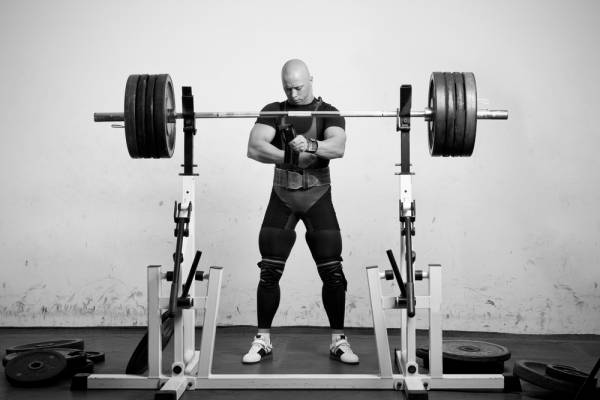Developing larger muscles – this is a topic dear to my heart. I have studied this for many years. I have read the research, personally experimented with numerous exercise scripts and protocol, probed the brains of the experts, and revisited time-honored publications devoted to what it takes to “hypertrophy” muscle. In it all, I have been fixated on the following:
- What is the optimal amount of resistance to use?
- How many repetitions should be performed?
- How many sets should be used?
- How fast should one move the resistance?
- What is the best number of weekly sessions to implement?
Naturally, it can be very confusing and worthy of hair pulling (which I still have, by the way). So, what IS the best formula for growing muscle?
The truth is there are many ways to induce muscular growth. A lot of things work, provided you work. Knowing that, it is only prudent to use an effort-based approach that is safe, proven, and time-efficient (the shortest route between two points is a straight-line).
Looking specifically at the proper amount of resistance to use for optimal hypertrophy, it is high-time we put to bed forever the conventional notion that “heavy” resistance increases muscular bulk and “light” resistance increases muscular endurance. Similar misguided thinking suggests that “heavy” equates stronger/bigger and “light” to muscle toning and definition. There are many factors to consider beyond these simplistic beliefs.
Regardless, let’s go the safest route. Being safe suggests that potentially more dangerous super-heavy resistances do not necessarily need to be included in a hypertrophy program. Improper lifting form can result in injury, but coupled with heavy resistance, the odds are increased.
A study at McMaster University examined the issue of amount of resistance, relative to post-exercise increases in muscle protein synthesis rates and differing nutritional support, as predictors of long-term training-induced muscle hypertrophy. The goal was to test whether the same was true with short-term, exercise-mediated changes in muscle protein synthesis.
18 men were randomly assigned to two of three leg-training conditions that differed in contraction intensity (percentage of a 1-repetition maximum [1RM]) or contraction volume (one to three sets):
Group 1 – 30% of a 1RM @ three sets to volitional muscular fatigue (VMF).
Group 2 – 80% of a 1RM @ 0ne set to VMF.
Group 3 – 80% of a 1RM @ three sets to VMF.
The subjects trained each leg with their assigned exercise prescription for 10 weeks at 3 training sessions per week. They took pre- and post-training measures of strength, muscle volume by magnetic resonance (MR) scans, pre- and post-training biopsies of the vastus lateralis (one of the quadricep muscles), and a single post-exercise (1-hour) biopsy following the first bout of exercise, to measure signalling proteins.
Training-induced increases in MR-measured muscle volume were significant, with no difference between groups:
- Isotonic maximal strength gains showed no difference between group two (80%-1 set) and group three (80%-3 sets), but were greater than group one (30% -3ets).
- Training-induced isometric strength gains were significant, but not different between the conditions.
- Biopsies taken 1-hour following the initial resistance exercise bout showed increased phosphorylation of p70S6K only in the group two and three conditions.
- There was no correlation between phosphorylation of any signalling protein and hypertrophy between all three groups.
According to their previous short-term measurements of muscle protein synthetic rates, a lower load lifted to failure resulted in similar hypertrophy as a heavy load lifted to failure.
Take home message:
Take a look at Henneman’s Size Principle of muscle fiber recruitment. It is and has been the accepted gold standard for explaining the phenomenon of muscle activation relative to resistance load and force demand. Essentially, the principle states that using relatively heavy loads activate a greater number of the higher-threshold, but “faster-to-fatigue” muscle fibers due to the greater initial demand. Relatively lighter loads recruit the “slower-to-fatigue” (and fewer) muscle fibers because of the lesser initial demand. However because “lighter” is a relative term (and yet can be significant resistance) a relatively large number of muscle fibers are still initially recruited because moving this resistance is still a demanding task as compared to no resistance at all (e.g., body weight-only).

What is important to know is that exercising to the point of VMF recruits and overloads the entire pool of muscle fibers activated during that event. If the load is heavy, many fibers are initially recruited, but they fatigue faster because they have less endurance (which explains the fact that a heavy resistance cannot be lifted for a high number of repetitions). The end result of this is a large number of muscle fibers receive no overload because they may have been recruited, but not be overloaded. The event ends because the higher-threshold (and faster-to-fatigue) fibers contribute, fatigue quickly, and thus cannot assist any more.
A lighter resistance recruits relatively fewer (but still significant) muscle fibers. If taken to the point of VMF – and with respect to Henneman’s Principle – a large “pool” of muscle fibers will have been recruited, stimulated, and thus overloaded. This includes the higher-threshold, faster-to-fatigue fibers that are activated when the exercises become more difficult and more recruitment is necessary to continue the event.
If you’re attempting to grow muscle, please heed these points:
- Mix it up. Plan training sessions with a variety of repetitions (e.g., 6-10, 10-15, 15-20). These repetition protocols can be on separate days or within the same session. Think variety.
- Take each work set to the point of volitional muscular fatigue (why stop at 8 repetitions when you can perform 11?). Better overload will be achieved.
- Be progressive. As sets become easier, add resistance for the prescribed repetitions. Remember, as muscle(s) become larger and stronger, they are able to tolerate more.
- Don’t be afraid to challenge your muscles to grow with higher repetitions. It works.






